





You don’t need to have any previous trading experience to get going. Choose our ready-made strategy that meets your timing and investment goals while minimizing risks with Loss Protection option. The interface is remarkably user friendly.
Founded in 2016 and with offices in Russia, XPO endeavours to deliver innovative solutions to the investment management community at large. These range from spot to derivative trading solutions through index services and technology products. XPO expertise and technological prowess enable us to bring disruptive best-in-class solutions to the financial market.
We have no alternative business interests. This means that we are single-mindedly committed to do well for our investors and for ourselves.

XPO provides a way to track the performance of the forex, CFD & crypto markets as a whole by holding a single index asset. Index funds have consistently beaten the average managed fund since their inception.

There are literally thousands of trading script for investors to choose from. Choice paralysis: choice adds cost, complexity and the need for advice. XPO eliminates this complexity for all kind of investors.

We believe in the power of ideas over a top-down investing approach or philosophy. We seek out and embrace diverse thinking and ideas to create the best outcomes for our clients and their differing needs.

This is why we’re trusted to manage $1.3 trillion of assets*, giving our clients the confidence of working with a partner with size, scale and stability, who takes the utmost pride in their duty of care.
Discover the best performing Crypto Strategies from all XPO Strategists.

@ALUN

@CLDT

@ZHND

@SUCP
Discover the best performing Forex and CFD Strategies from all XPO Strategists.

@DIMX

@MSMU

@BCAP

@HATRD
| Index Name | Index Manager | Top Assets | Weekly Change |
Monthly Change |
Funds Trading |
||
|---|---|---|---|---|---|---|---|
 |
Crypto Notebook CRYNO |
 |
Anisa Zotova |
|
4.36% | 12.46% | $ 10048032.42 |
 |
Profit Magnet PRMG |
 |
Alevtina Pavlova |
|
4.18% | 10.91% | $ 9771764.75 |
 |
Metropolis FX METFX |
 |
Larisa Sokolov |
|
3.7% | 15.92% | $ 8877909.1 |
 |
Future Chain Index FUCHI |
 |
Anna Zotova |
|
3.2% | 11.33% | $ 24707240.4 |
 |
Backyard Trade BACKT |
 |
Guzel Seleznyov |
|
2.46% | 8% | $ 4812452.13 |
 |
Profit Folio PRFO |
 |
Moses Bykova |
|
4.02% | 16.51% | $ 8751612.16 |
 |
Index Unicorn UNICR |
 |
Plato Mordvinova |
|
3.37% | 14.77% | $ 10723045.65 |
 |
Dinaro Club DICL |
 |
Proclus Sergeyeva |
|
3.73% | 15.53% | $ 7092436.34 |
 |
Hunting Machine HUNM |
 |
Nikita Maslov |
|
3.91% | 16.56% | $ 10722727.24 |
 |
Deriva Forex Index DFOIN |
 |
Vladlen Maslov |
|
4.77% | 16.84% | $ 13719836.36 |
Expert View

05-12-2024
(Reuters) -Bitcoin broke above $100,000 for the first time on Thursday as the election of Republican Donald Trump as president fuelled bets that his administration will create a friendly regulatory environment for cryptocurrencies.
The world's biggest and best-known cryptocurrency has more than doubled from this year's low of $38,505 and is up over 50% since Trump's sweeping election win in early November.
Here are key events in bitcoin's journey towards $100,000 and beyond:
2008: Satoshi Nakamoto, the pseudonym used by the cryptocurrency's presumed developer, introduces the concept of bitcoin
2010: The first retail transaction takes place when a user pays 10,000 bitcoin for two Papa John's (NASDAQ:PZZA) pizzas
2013: As bitcoin's popularity grows, Cameron and Tyler Winklevoss, co-founders of crypto exchange Gemini, file their first application with the U.S. Securities and Exchange Commission to create a spot bitcoin ETF.
Grayscale Investments launches the Bitcoin Investment Trust, an open-ended private bitcoin trust.
2016: The Winklevoss brothers adjust their application numerous times, such as the exchange on which the product would be traded. They also file amendments naming State Street (NYSE:STT) as administrator. Grayscale files with the SEC to convert its bitcoin trust into a spot bitcoin ETF.
2017: The SEC rejects the Winklevoss application on the grounds bitcoin markets were not mature enough. Grayscale withdraws its first attempt to convert its trust into an ETF, saying the regulatory environment was not developed enough.
2018: The SEC rejects the Winklevoss twins' second application to launch a spot bitcoin ETF, saying cryptocurrency exchanges do not have the necessary controls to prevent manipulation.
2020: Grayscale transforms its trust into an SEC-reporting entity, and its shares begin trading on the pink sheets, for stocks that trade over the counter. Although not an ETF, it is the first publicly traded bitcoin fund in the U.S.
2021: The first spot bitcoin ETF launches in Canada. Gary Gensler replaces Jay Clayton as SEC chair in April.
In October, the SEC approves the ProShares Bitcoin Trust listed on the Chicago Mercantile Exchange, noting the CME has a satisfactory mechanism for surveilling abuse in the futures market. It is the first U.S.-listed futures-based bitcoin ETF, accumulating $1 billion in assets within its first days of trading - faster than any other ETF.
Also in October, Grayscale again submits an application to the SEC to convert its trust into a spot bitcoin ETF.
2022: The SEC rejects several applications from would-be spot bitcoin ETF issuers, including SkyBridge, Fidelity and Bitwise. The SEC also rejects Grayscale's application, prompting the company to sue the agency.
Amid crashing crypto prices, multiple crypto companies file for bankruptcy, including Three Arrows Capital, Celsius Network and FTX, whose founder Sam Bankman-Fried is also charged with fraud.
2023:
May: Cathie Woods' ARK Investments and CBOE Global Markets file for a spot bitcoin ETF, giving the SEC a maximum of 240 days to approve or reject the application.
June: BlackRock (NYSE:BLK) files a spot bitcoin ETF application with the SEC, raising industry hopes the agency may approve the product and sending the price of bitcoin to a one-year high. A flurry of other issuers and exchanges, including Fidelity and Invesco, file bitcoin ETF applications in the subsequent weeks and months.
August: A federal appeals court in Washington D.C. rules in favour of Grayscale, saying the SEC did not justify why it had rejected its proposal. Europe's first spot bitcoin ETF begins trading on the Euronext (EPA:ENX) Amsterdam stock exchange.
October: The SEC opts not to appeal the court's ruling in the Grayscale case and is required to reexamine the application.
2024:
Jan. 10: The SEC approves 11 proposals from issuers including BlackRock, Fidelity and VanEck, among others, to launch spot bitcoin ETFs.
February: Net inflows into the 10 largest ETFs hit $4 billion in the first month, according to LSEG data.
March: Bitcoin tops $70,000 for the first time to hit a record high, having doubled in value in the five months.
June: Trump pitches himself as a champion for cryptocurrency and slammed Democrats' attempts to regulate the sector during a San Francisco fundraiser.
July: Trump tells a bitcoin conference that, if elected, he will create a strategic national bitcoin stockpile and will ensure the United States is the "crypto capital of the planet."
October: The SEC grants "accelerated approval" to U.S. exchanges to list and trade options tied to 11 spot bitcoin ETFs.
Nov 6: Trump is declared winner of the presidential election, sparking a huge rally in a range of assets, with bitcoin being the standout gainer.
Nov 12: Total (EPA:TTEF) crypto market cap tops $3 trillion. Year-to-date ETF net inflows hit $25.8 billion, according to LSEG data.
Nov 21: Bitcoin nears $100,000 for the first time in history, driven by a swell of buying from investors in anticipation of Trump dismantling a lot of the regulation around crypto investment.
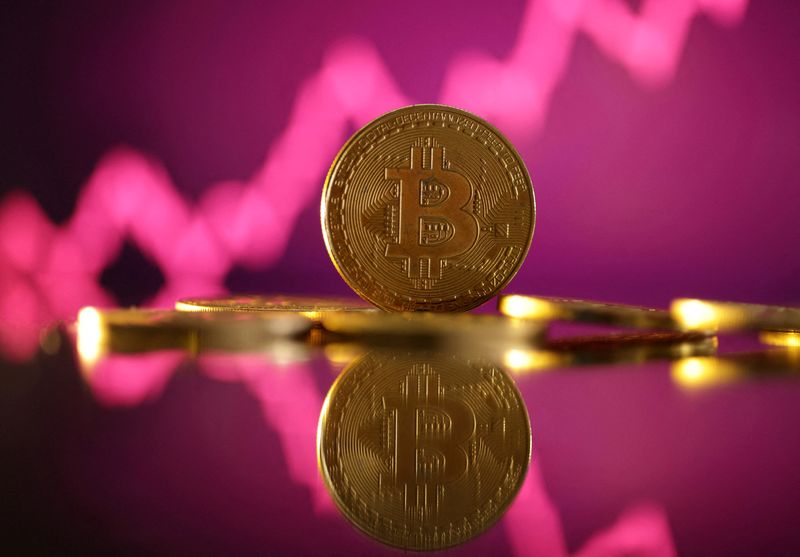

05-12-2024
Investing.com-- Gold prices moved little in Asian trade on Thursday, seeing little safe haven demand despite political turmoil in France and South Korea, as risk appetite improved and the dollar remained strong.
A rally on Wall Street- to record highs- largely undermined haven demand for gold, as did comments from Federal Reserve Chair Jerome Powell flagging a more cautious approach to future interest rate cuts.
Spot gold fell slightly to $2,649.09 an ounce, while gold futures expiring in February fell 0.1% to $2,672.99 an ounce by 23:14 ET (04:14 GMT).
The yellow metal saw limited safe haven demand this week even as France’s government collapsed, while calls for the impeachment of South Korean President Yoon Suk-Yeol grew after he unsuccessfully attempted to impose martial law in the country.
Risk-driven assets largely brushed off the political turmoil. While local markets in France and South Korea did weaken, broader markets largely advanced this week, with Wall Street indexes hitting a record high overnight on strength in technology shares.
Other precious metals were also muted on Thursday. Platinum futures rose 0.1% to $949.60 an ounce, while silver futures fell 0.5% to $31.767 an ounce.
Among industrial metals, benchmark copper futures on the London Metal Exchange fell 0.2% to $9,086.50 a ton, while February copper futures fell 0.1% to $4.1943 a pound.
Resilience in the dollar also pressured metal markets. The greenback rose sharply earlier this week after U.S. President-elect Donald Trump threatened to impose tariffs on several countries.
The greenback mostly retained these gains after the Fed’s Powell lauded recent strength in the U.S. economy.
Speaking at a New York Times (NYSE:NYT) event, Powell said strength in the economy allows the Fed to adopt a more cautious approach to future easing.
While he did not downplay expectations for a December rate cut, Powell’s comments did spur some caution over a slower pace of rate cuts in 2025. Expectations of inflationary policies under Trump also spurred uncertainty over potentially high rates in the long term.
Higher for longer rates herald more pressure on non-yielding assets such as metals.
Focus this week is on key nonfarm payrolls data, due on Friday. The reading is likely to factor into expectations for future rate cuts.


29-11-2024
The Japanese yen hit its strongest level against the dollar in just over a month on Friday as higher-than-expected inflation data from Tokyo reinforced expectations for a December rate hike by the Bank of Japan.
The yen’s USD/JPY pair- which gauges the amount of yen needed to buy one dollar- sank around 1% to as low as 150.01 yen- its lowest level since late-October.
The drop in the pair came as consumer price index data from Tokyo read stronger than expected for November.
The reading acts as a bellwether for nationwide inflation, and factored into expectations that steady inflation will keep the BOJ hawkish in the coming months.
A recent Reuters poll showed traders are positioning for a 25 basis point rate hike by the BOJ in December. BOJ Governor Kazuo Ueda had also recently reiterated the central bank’s plans to hike interest rates further, citing a “virtuous cycle” of higher wages and steady inflation.
“The acceleration in inflation, combined with the solid recovery in monthly activity, increases the odds of another BoJ rate hike in December,” ING analysts wrote in a note.
A December hike will be the BOJ’s third hike in 2024, as the central bank ended nearly a decade of negative rates and began tightening policy. The bank’s moves were driven largely by a sharp pick-up in wages this year, which underpinned private spending and inflation.
UBS analysts said in a recent note that they expect Japanese wages to rise further in 2025, potentially heralding more rate hikes from the BOJ. The central bank is also expected to act in supporting the yen, which was battered by a substantially stronger dollar through November.
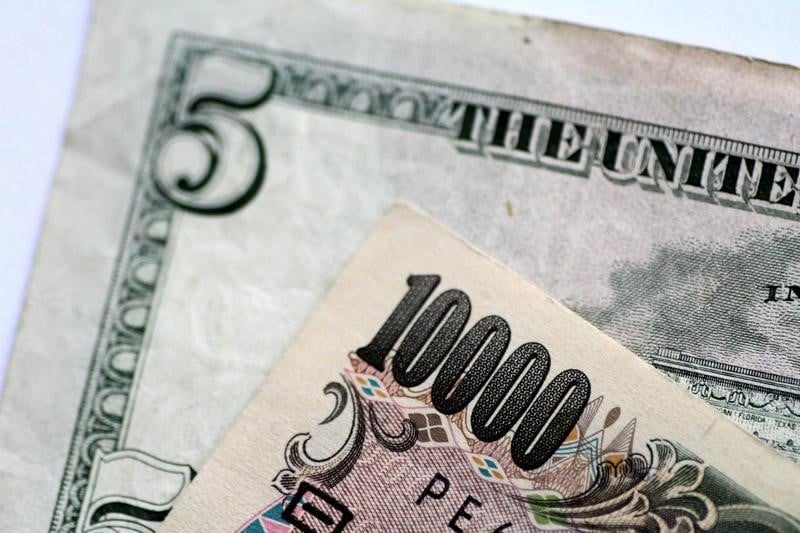

28-11-2024
(Reuters) -The euro dipped against the dollar on Thursday as traders reined in bets of more interest rate cuts by the European Central Bank, while broader currency moves were muted in U.S. holiday-thinned trading.
The Japanese yen slipped to 151.58 per dollar but with its 2.1% gain this week the currency has recovered losses suffered since the U.S. election and was heading for its best weekly showing in three months. Markets see about a 53% chance the Bank of Japan will raise rates next month.
Broad trade was light as U.S. stock and bonds markets were shut for the Thanksgiving holiday.
The dollar index ticked up to 106.21 after dropping to as low as 105.85 in the prior session, a two-week trough.
"It's likely to be a subdued couple of days to wrap up the week but I expect the dollar should rebound as December gets underway," said Michael Brown, senior research strategist at Pepperstone, adding that Wednesday's move that put the dollar back under 106 seemed a bit "detached from fundamentals."
"We're still talking about U.S. exceptionalism, an incredibly long laundry list of issues in the euro zone and now we've got French budget worries this morning."
The euro slipped 0.2% to $1.054625 after its sharp rise on Wednesday following hawkish remarks from European Central Bank board member Isabel Schnabel
The comments prompted investors to pull back on more aggressive rate cut expectations and buy the common currency which is on track for its worst month in two-and-a-half years.
German annual inflation was flat in November despite expectations of a second consecutive increase. It comes ahead of euro zone inflation data on Friday which could offer hints on the ECB's next steps.
Money markets now see only a 13% chance of a larger 50 basis points rate cut by the ECB, whereas last Friday it was a toss up. A 25 bps move is fully priced in.
"Today’s macro data releases in the euro zone should encourage the ECB hawks to object to a 50bp rate cut in December," said Carsten Brzeski, global head of macro at ING.
Eyes are also on France's fragile coalition government, which is struggling to pass a budget.
HOLIDAY LULL
Sterling was little changed at $1.2666 versus the greenback, while the Swedish crown firmed against the dollar and euro as data showed sentiment among businesses and consumers in Sweden picked up in November.
The Australian dollar recovered from early weakness and gain slightly to $0.6501. Reserve Bank of Australia governor Michele Bullock said that core inflation was too high to allow for rate cuts in the near term.
While the currency majors were in a bit of a lull, there was some action in emerging markets.
Russia's rouble strengthened to just over 110 per dollar after shedding nearly a third of its value since August as the Russian central bank said it would stop forex purchases until the end of the year to support the currency.
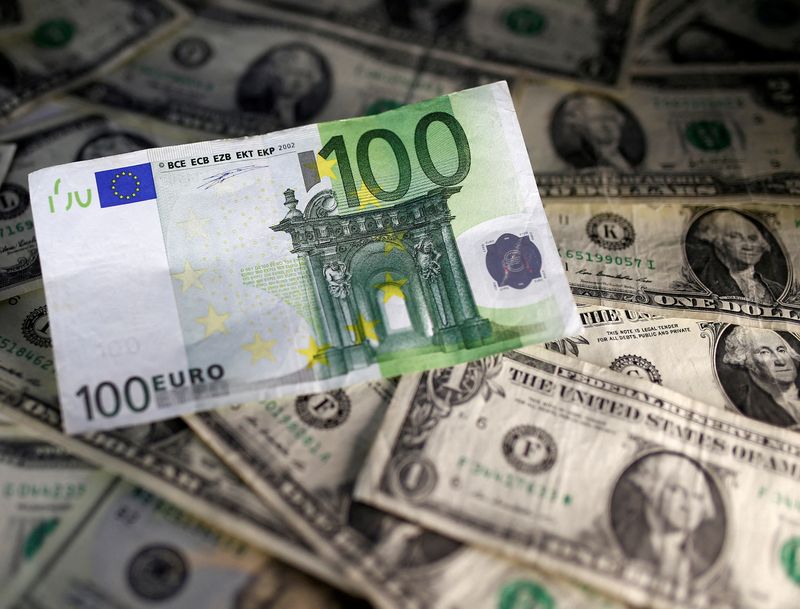

28-11-2024
On Nov. 28, 2012, Bitcoin underwent its first halving at block 210,000. This event halved the block reward from 50 BTC to 25 BTC. Crypto ranking platform CoinGecko took to X to share this milestone as Bitcoin's historic first halving event marked its 12th anniversary.
The halving mechanism, built into Bitcoin's code by its pseudonymous founder Satoshi Nakamoto, is scheduled to occur every four years, or every 210,000 blocks. This process continues until the maximum supply of 21 million Bitcoins is reached.
The first halving was an important milestone for the Bitcoin network. At the time, Bitcoin was still in its early stages, with a small network of enthusiasts and miners. Bitcoin's price on the day of its first halving was roughly $12.20. Despite initial fears about its impact on miners' revenue, the halving event eventually fueled Bitcoin's price rise.
In the months following the first halving, Bitcoin's price rallied, hitting above $1,000 by the end of 2013.
Bitcoin's most recent halving occurred on April 19, 2024, resulting in a block reward of 3.125 BTC. The next halving is expected to take place in April 2028, reducing the block reward to 1.5625 Bitcoin. The final halving is projected to happen in 2140, when the maximum supply of 21 million Bitcoin is expected to be reached.
Bitcoin resumed a climb toward $100,000 after an earlier drop this week, topping $97,000 during yesterday's trading session.
The digital asset gained the most in more than two weeks on Wednesday, reaching $97,386, before falling to $95,612 at press time, after touching intraday highs of $96,676 in early Thursday trading.
Bitcoin came within $300 of the historic $100,000 threshold on Nov. 22 before losing approximately $9,000 in the days that followed. The token peaked at $99,728 on Friday before declining over the next four days.
Bitcoin plunged as low as $90,682 on Tuesday before rebounding.
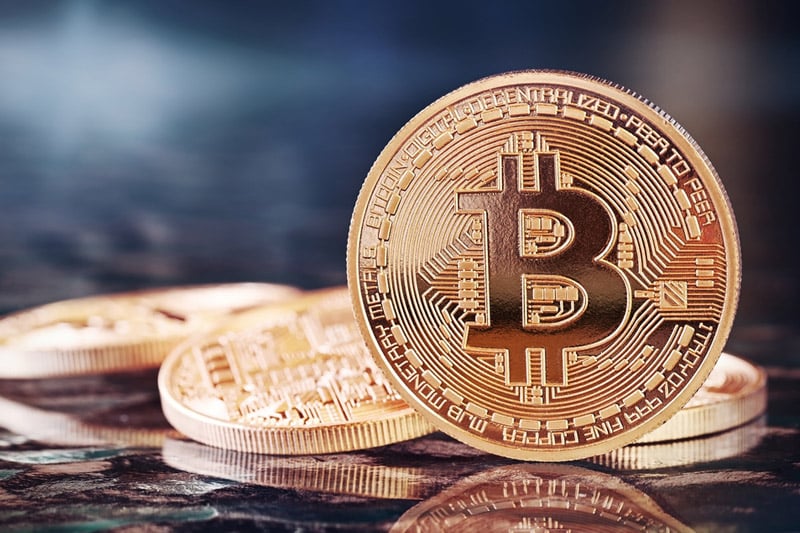

26-10-2024
As reported by U.Today, Microsoft (NASDAQ:MSFT) shareholders are gearing up for a big December vote on a proposal to diversify the company's balance sheet, by including major cryptocurrency Bitcoin (BTC). This development is generating interest in the space as crypto enthusiasts consider the implications of such a decision.
Anthony Pompliano has reacted to the news, indicating that Microsoft's consideration of Bitcoin comes from a broader recognition that holding cash in dollars may not be sustainable long term. The cryptocurrency is becoming more and more attractive as a digital store of value, says the entrepreneur, as more entities look for ways to save the value of their assets amid uncertain inflationary conjecture.
Earlier, Pompliano expressed belief that as awareness of Bitcoin's potential continues to grow, Wall Street will eventually acknowledge the opportunity cryptocurrency presents. This would all result in a significant influx of capital into Bitcoin, driving the price of Bitcoin even higher, he assured.
The potential for Microsoft, currently the third-largest company globally, to follow in the footsteps of industry players like MicroStrategy is still up for debate as the decision to adopt a Bitcoin strategy remains uncertain.
While interest from within the company is evident, the board has officially recommended voting against this initiative.
The proposal, brought forth by the National Center for Public Policy Research (NCPPR), asserts that corporations have a fiduciary duty to protect shareholder value from economic debasement. This raises questions about the company's stance on integrating Bitcoin into its current vision.
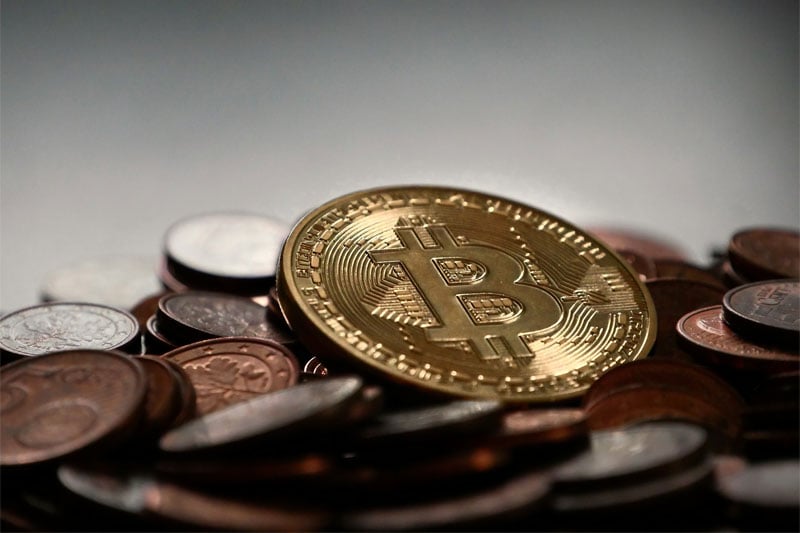

07-10-2024
Japan's yen fell to its lowest in nearly two months and other major currencies too were grappling with losses early on Monday as the dollar extended a rally sparked by Friday's strong U.S. jobs data and an escalation in the Middle East conflict.
The yen fell marginally to hit 149.10 per dollar, its weakest level since Aug. 16, before paring losses to trade around 148.40. That came on top of a more than 4% decline last week, its biggest weekly percentage decline since early 2009.
The dollar's gains followed a U.S. jobs report that showed the biggest jump in jobs in six months in September, a drop in the unemployment rate and solid wage rises, all pointing to a resilient economy and forcing markets to reduce pricing for Federal Reserve rate cuts.
"With rate cuts still being the default position, and when married to upbeat earnings expectations and China going hard on liquidity and fiscal, the equity bull case and the U.S. dollar get a shot in the arm," said Chris Weston, head of research at Australian online broker Pepperstone.
"While geopolitical headlines and the possibility of an energy supply shock remain a continued threat to sentiment, those set long of risk haven’t heard anything significantly market moving through the weekend and head into the new trading week feeling pretty good about the prospect of further upside."
In latest developments in the Middle East, Israel bombed Hezbollah targets in Lebanon and the Gaza Strip on Sunday ahead of the one-year anniversary of the Oct. 7 attacks that sparked its war. Israel's defence minister also declared all options were open for retaliation against arch-enemy Iran.
Brent crude oil futures were 0.4% lower on Monday, but rose more than 8% last week, the largest weekly gain since early January 2023.
The dollar index measure against major peers was flat. It rose 0.5% on Friday to a seven-week high, logging more than 2% gains for the week, its biggest in two years. The euro stood at $1.0970, down 0.06%.
The yen's underperformance has also to do with last week's comments from new prime minister, Shigeru Ishiba, that stoked expectations that rate hikes in Japan are further away.
U.S. 10-year Treasury yields were at 3.9711%, just off their highest in two months. Yields dipped early last week when investors bought safe-haven Treasuries after Iran launched more than 180 missiles against Israel in escalating geopolitical tensions.
Market expectations have swung to the extreme for the Federal Reserve to do just a 25 bps cut in November, rather than 50 bps, following the jobs data. They now price in a 98% chance of a quarter point cut, up from 47% a week ago, and a 2% chance of no cut at all, according to CME's FedWatch tool
"Dollar-yen will be staying around 145-149 in coming weeks due to lower expectations on an outsized cut by the Fed in November and dovish stance of Japan's PM ahead of the general election on October 27 as long as the Middle East tensions remain subdued," said Ryota Abe, economist at SMBC in Singapore.
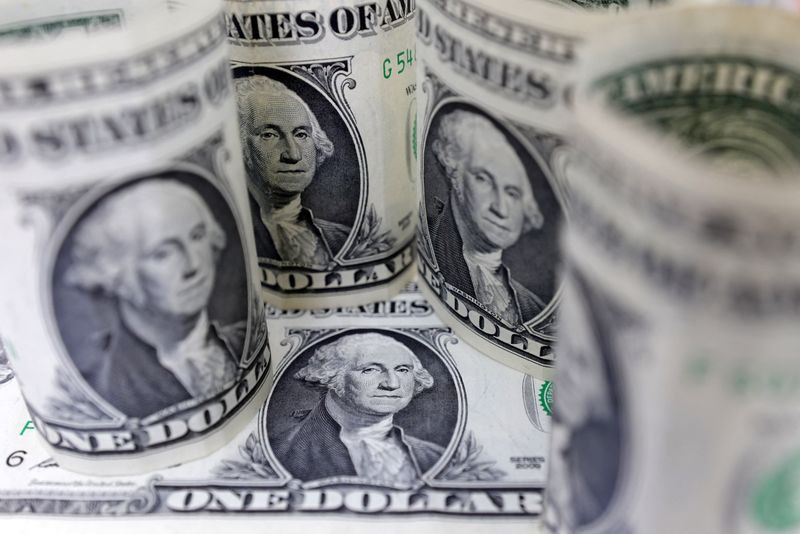

07-10-2024
Gold prices fell slightly in Asian trade on Monday, and were nursing a tumble from record highs as strong U.S. payrolls data fueled bets on a smaller interest rate cut by the Federal Reserve.
The yellow metal fell from record highs as the dollar and U.S. Treasury yields shot up on the strong payrolls data, which saw traders largely scale back bets the Fed will cut interest rates by 50 basis points again.
Focus this week is on a slew of signals from the Fed and the U.S. economy, both of which are likely to factor into interest rates.
Spot gold fell 0.2% to $2,647.64 an ounce, while gold futures expiring in December fell slightly to $2,667.10 an ounce by 00:16 ET (04:16 GMT).
Bullion prices had surged to record highs in September after the Fed cut rates by 50 bps and announced the start of an easing cycle.
Stronger-than-expected nonfarm payrolls data on Friday, however, spurred bets that the Fed will cut rates only by 25 bps in its November meeting. CME Fedwatch showed traders pricing in an over 90% chance of such a scenario.
Traders were also seen positioning for a higher terminal rate for the Fed, which presents a less attractive environment for metal prices. The dollar surged after Friday’s data.
Focus this week is on addresses by a string of Fed officials, as well as the minutes of the Fed’s September meeting, for more cues on rates.
Consumer price index inflation data due later in the week is also likely to factor into the outlook for rates.
Other precious metals tracked declines in gold. Platinum futures fell 0.5% to $997.05 an ounce, while silver futures fell 0.1% to $32.360 an ounce.
Among industrial metals, copper prices steadied on Monday after logging wild swings over the past week, although they still remained relatively upbeat on the prospect of more stimulus in top importer China.
Benchmark copper futures on the London Metal Exchange steadied at $9,972.0 a ton, while one-month copper futures rose 0.2% to $4.5728 a pound.
Copper was initially buoyed by China announcing more stimulus measures in late-September. But trading volumes in the red metal dwindled over the past week, on account of the week-long Chinese Golden Week holiday.
Chinese markets are set to reopen on Tuesday, while the government is also set to hold a briefing on more stimulus measures.


07-10-2024
Bitcoin’s price rose on Monday, extending a rebound over the weekend as signs of resilience in the U.S. economy helped support broader risk appetite.
Betting markets also showed investors leaning more towards a Donald Trump presidency over Kamala Harris, which presents a better regulatory outlook for crypto.
Bitcoin tracked strong gains in global stock markets after stronger-than-expected U.S. nonfarm payrolls data quashed fears of a U.S. recession. But the reading also diminished expectations for deep interest rate cuts by the Federal Reserve.
Bitcoin rose 2.7% to $63,558.3 by 00:41 ET (04:41 GMT).
Crypto betting platform Polymarket showed traders pricing in a 50.6% chance of a Trump victory in the 2024 U.S. elections, compared to 48.4% for Harris.
The shift towards Trump comes after the former President held a rally at Butler, Pennsylvania- where he was subject to an assassination attempt earlier this year. Tesla Inc (NASDAQ:TSLA) CEO Elon Musk also made an appearance at the rally, endorsing Trump.
Trump has presented a pro-crypto stance in his campaigning efforts, and also accepts donations in crypto. He has also promised to enact crypto-friendly regulations if elected.
Harris, on the other hand, has offered no insight into her stance on crypto, and is expected to potentially continue the Biden administration’s crackdown against the sector.
Broader crypto markets rose on Monday, tracking gains in Bitcoin and as risk sentiment improved.
World no.2 crypto Ether rose 3% to $2,487.07, while altcoins SOL, XRP and ADA rose between 2.3% and 5%. MATIC was flat, while DOGE rose 4.7%.
Further gains in crypto were held back as the dollar rebounded on expectations of smaller interest rate cuts.
Focus this week is on more cues on the U.S. economy, after stronger-than-expected nonfarm payrolls data last week saw traders wipe out bets on a 50 basis point rate cut. Traders were seen pricing in an over 90% chance for a 25 bps cut in November, and were also seen pricing in a higher terminal rate, according to CME Fedwatch.
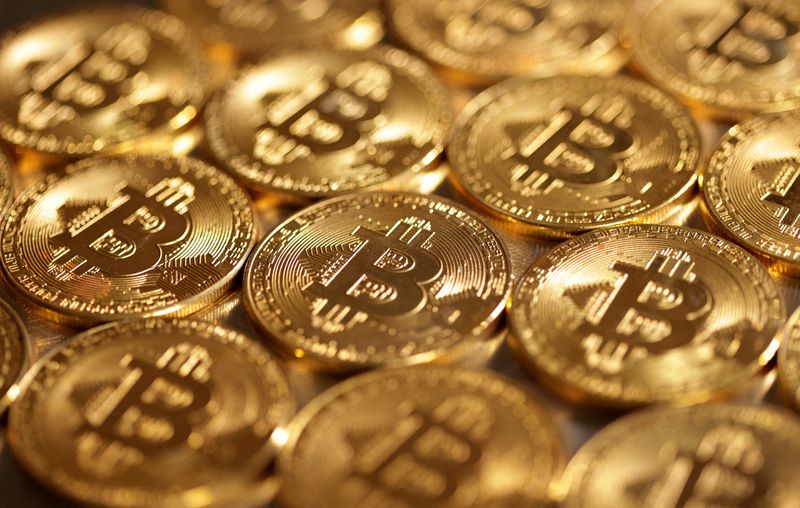

13-09-2024
Oil prices rose in Asian trade on Friday and were set for a positive close to the week as concerns over supply disruptions stemming from Hurricane Francine helped crude rebound from near three-year lows.
But the prices were still nursing steep losses from last week, and were trading only marginally above this week’s lows, as persistent fears over slowing demand stemmed crude’s advance.
Brent oil futures expiring in November rose 0.8% to $72.57 a barrel, while West Texas Intermediate crude futures increased by 0.9% to $69.58 per barrel by 09:43 ET.
Both contracts are on track to break a string of weekly declines if the gains hold.
Hurricane Francine disrupts Gulf of Mexico production
Oil production and refinery activities in the Gulf of Mexico were battered by Hurricane Francine as it made landfall in Louisiana earlier this week, although it was later downgraded to a tropical storm.
A slew of offshore platforms in the storm’s path were evacuated through the week, while operations in crude and natural gas shipping terminals were also suspended.
The Gulf of Mexico accounts for nearly a quarter of all U.S. oil production, with any extended production halts heralding tighter supplies in the country.
Oil markets grapple with demand concerns
But despite some positive momentum this week, oil prices were still trading close to three-year lows amid persistent concerns over slowing demand.
Weak economic signals from China were a key driver of these concerns, as traders positioned for potentially weaker demand in the world’s biggest oil importer.
Both the Organization of the Petroleum Exporting Countries and the International Energy Agency slashed their oil demand forecasts for 2024 in separate reports released earlier in the week, citing concerns over China.
But they also said demand would come from other sources in Asia, especially India, as the country sees outsized economic growth.
In the US., data showing a large build in gasoline and distillate inventories pushed up concerns that fuel demand in the country was slowing with the end of the travel-heavy summer season.


13-09-2024
San Francisco, USA, September 13th, 2024, Chainwire
Alchemy, the leading web3 development platform, has officially partnered with Cross Finance, an innovative DeFi platform, to power dApp development on the CrossFi Chain. This strategic collaboration will also see Alchemy become a core development partner, enabling the building and scaling of dApps on the CrossFi Chain and further advancing the possibilities of decentralized finance.
The CrossFi Chain, designed to bridge the gap between traditional and DeFi, provides an open, scalable infrastructure that empowers individuals and businesses to engage in secure, transparent, and efficient financial transactions. By partnering with Alchemy, Cross Finance leverages Alchemy’s robust dApp building tools to streamline development processes, powerful APIs, and state-of-the-art tools for developers building dApps on CrossFi.
“As Cross Finance launches its Mainnet, our goal is to push the boundaries of decentralized finance and deliver cutting-edge financial solutions,” said Alexandar Mamasidikov, CEO of Cross Finance. “Alchemy’s APIs and expertise in web3 dApp development will play a pivotal role in making CrossFi Chain the go-to platform for dApp development.”
Alchemy, known for its developer-first platform and robust APIs and SDKs, provides blockchain infrastructure that powers major networks like Ethereum, Polygon, and others. With this partnership, developers building on the CrossFi Chain will have access to Alchemy’s advanced API services, which facilitate everything from secure smart contract deployment to real-time data analytics. This will boost the performance and security of dApps.
Key Features of the Partnership Include:
"We're thrilled to partner with CrossFi to onboard the next wave of builders to the CrossFi chain. Their ecosystem, uniquely coupling the benefits of Cosmos and EVM, provides builders with both scalability and efficiency, and is an amazing environment to deploy any dApp, from payments to cross-chain bridges. We're excited to see what builders create on CrossFi!" said Suzanne Slaughter, Product Marketing Lead
With the upcoming launch of the CrossFi Mainnet, both companies are committed to fostering innovation within the blockchain ecosystem and providing developers with the tools they need to create solutions that will transform the future of finance.
About Cross Finance
Cross Finance is a decentralized finance platform focused on uniting traditional finance and DeFi to offer secure, transparent, and efficient financial services on a global scale. The CrossFi Chain is designed to enable seamless transactions and develop innovative decentralized applications.
About Alchemy
Alchemy is a leading blockchain development platform that provides the essential infrastructure and tools for developers to build high-performing decentralized applications. Alchemy’s technology powers the top blockchain applications globally, helping teams unlock the full potential of blockchain innovation.


12-09-2024
Standard Chartered (OTC:SCBFF) resumed coverage of digital assets in a not Thursday, projecting an end-2024 price target for Bitcoin of approximately $125,000 if former President Donald Trump wins the upcoming election.
The firm's forecast reflects a broader positive outlook on Bitcoin and digital assets, driven by several key factors, regardless of the election outcome.
Standard Chartered outlined its expectations, stating, "We see BTC at c.USD 125,000 level at end-2024 under a Trump victory, or c.USD 75,000 level under Harris."
Both projections represent fresh all-time highs for Bitcoin, underscoring Standard Chartered's generally optimistic view on the cryptocurrency's future.
The analysts highlighted that the US election will influence digital assets, but they believe the impact will be less significant than in previous election cycles.
"Progress on relaxing regulations – particularly the repeal of SAB 121, which imposes stringent accounting rules on banks' digital asset holdings – will continue in 2025 no matter who is in the White House; it would just be slower under a Harris presidency," said the firm.
The anticipated regulatory progress is seen as a crucial factor supporting Bitcoin's price.
Additionally, Standard Chartered expects positive momentum from developments in US Treasury markets and a seasonal rebound in Bitcoin ETF inflows in October.
"Current developments in US Treasury markets – a re-steepening curve, with breakevens falling less than real yields and risk-neutral yields falling while term premium is stable – are building positive momentum for BTC," adds the firm.
Even if a Harris victory initially triggers a price decline, the analysts believe that subsequent market recognition of ongoing regulatory progress and other positive drivers will lead to a rebound.
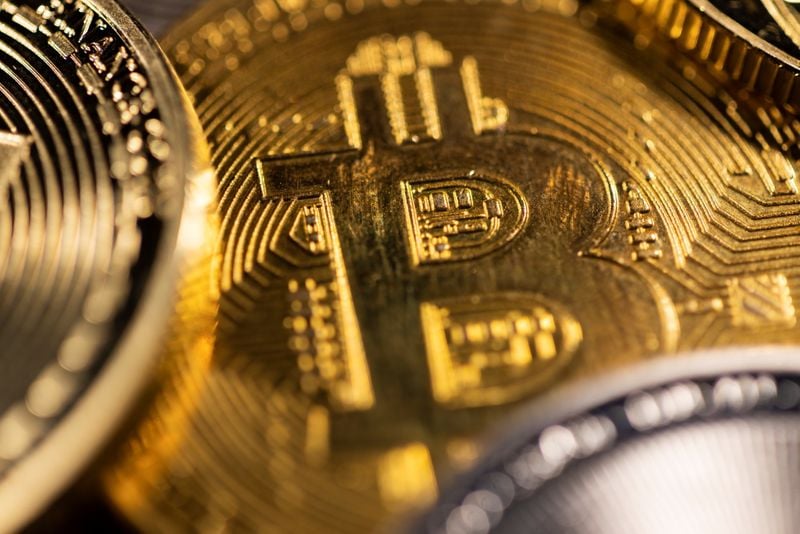

12-09-2024
Investing.com-- Most Asian currencies moved in a flat-to-low range on Thursday, while the dollar firmed as a strong reading on U.S. consumer inflation dashed hopes that the Federal Reserve will cut interest rates by a wide margin.
Soft inflation data from Japan weighed on the yen, pulling the currency further off its strongest levels in eight months. But the yen still remained relatively strong as hawkish comments from the Bank of Japan continue to trickle in.
Barring the yen, most regional currencies were also nursing steep losses from the past week, as heightened fears of a U.S. recession battered risk-driven markets.
The dollar index and dollar index futures both rose 0.1% in Asian trade, extending gains from Wednesday after core consumer price index inflation data read higher than expected for August.
While headline CPI inflation still eased, the core reading suggested that inflation may prove to be stickier than initially expected, necessitating smaller rate cuts from the Fed.
Bets that the central bank will cut rates only by 25 basis points when it meets next week grew substantially after Wednesday’s data, while bets on a 50 bps cut more than halved, CME Fedwatch showed.
But before next week’s Fed meeting, focus is on producer price index inflation data due later on Thursday, for more cues on inflation.
The prospect of smaller rate cuts bodes poorly for Asian markets, given that such a scenario heralds tighter U.S. monetary conditions for longer.
The Japanese yen retreated from its strongest levels in eight months, with the USDJPY pair rising 0.1% to 142.47 yen.
The yen extended overnight declines after PPI inflation read softer than expected for August.
The softer inflation print raised some questions about just how much headroom the Bank of Japan has to keep raising interest rates, given that the BOJ signaled that it will raise interest rates higher this year on an increase in inflation.
BOJ board member Naoki Tamura said on Thursday that the bank needed to raise interest rates to at least 1% to avoid inflationary risks.
The central bank is set to meet next week, with analysts doubtful over another rate hike after an increase in late-July. Consumer inflation data due next week is also set to offer more cues.
Broader Asian currencies moved in a flat-to-low range, amid uncertainty over U.S. interest rates and a dearth of local cues.
The Australian dollar’s AUDUSD pair rose 0.1%, while the South Korean won’s USDKRW pair and the Singapore dollar’s USDSGD pair were both flat.
The Chinese yuan’s USDCNY pair was flat and nursing some losses this week as sentiment towards the country was dented by weak imports data. Reports that U.S. lawmakers were preparing more trade restrictions on Beijing also undermined the yuan.
The Indian rupee’s USDINR pair was flat and hovered close to the 84 rupee level.
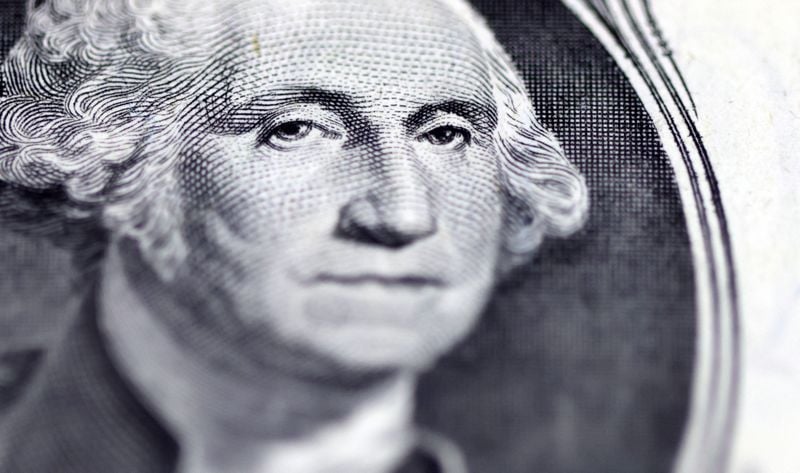

12-09-2024
U.Today - Responding to a CNBC report that Bitcoin (BTC) could soon reach six figures regardless of who wins the U.S. election, Samson Mow said that this is a bearish estimate. According to Mow's previous speeches, the price of the first cryptocurrency is not less than $1 million, and Bitcoin will reach this milestone.
As of now, however, the price of the major cryptocurrency is $57,500, which is five figures, with its all-time high being almost 28% higher at around $74,000 per BTC.
At this price, Bitcoin has a total market capitalization of $1.14 trillion. Such a figure ranks Bitcoin as the eighth largest company in the world - higher than Warren Buffet's Berkshire Hathaway (NYSE:BRKa) - ironically, as the Wall St. trading legend is a well-known cryptocurrency skeptic.
If Bitcoin ever reaches $100,000, which is still a five-figure valuation, its market capitalization will be close to $2 trillion, which is more than Amazon (NASDAQ:AMZN), the fourth largest company in the world.
However, if it manages to hit the first seven-figure mark of $1,000,000 per BTC, then the cryptocurrency will have six times more market cap than Apple (NASDAQ:AAPL), and that is just with the current supply of 19,753,159 BTC in circulation. What's more, it will surpass gold, even though the precious metal is currently the world's most valuable asset.
The question remains: is this a realistic goal for the largest cryptocurrency? For Samson Mow, it is a no-brainer; for someone like Peter Schiff, it is a mass delusion. Only time will tell who is right.
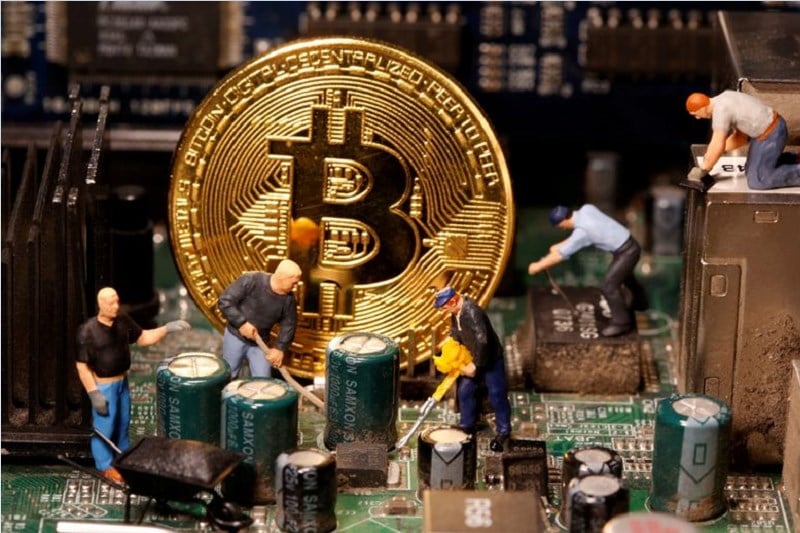

23-08-2024
Morgan Stanley has lowered its forecast for global oil demand growth in 2024 to 1.1 million barrels per day from 1.2 million barrels per day.
This revision is attributed to several factors, including slower economic growth in key markets, increased adoption of alternative energy sources, and evolving global economic conditions.
China's economic growth has been slower than anticipated, significantly impacting its oil consumption. As one of the largest consumers of oil globally, this slowdown is a critical factor in the downward revision.
The rapid increase in the sale of LNG trucks in China has led to a marked decline in diesel demand. This shift alone is expected to reduce China's oil demand growth by 100-150 kb/d in 2024.
The proliferation of NEVs in China, now making up nearly 50% of all new car sales, is further eroding gasoline demand. “The displacement of diesel by LNG trucks has reduced China's oil demand growth this year by another 100-150 kb/d, we estimate,” the analysts said.
High inflation, rising interest rates, and geopolitical tensions are dampening economic growth, especially in developed markets. These factors contribute to a more subdued outlook for global oil demand.
Certain industries are seeing a faster-than-expected transition towards alternatives to oil, impacting demand across different sectors.
The continued rise of EVs, coupled with improvements in battery technology and infrastructure, is gradually reducing the reliance on oil, particularly in transportation.
The adoption of LNG, especially in heavy-duty transportation and industrial applications, is further decreasing oil demand.
Non-OPEC supply growth has decelerated, nearly stalling in recent months. This trend has contributed to a tighter-than-expected oil market in the short term.
While Morgan Stanley expects non-OPEC supply to reaccelerate in the coming months, there is caution regarding whether this will align with previous growth projections.
OPEC's ongoing production cuts have been instrumental in maintaining market balance. However, the anticipated softening of demand, coupled with increased supply in late 2024, could lead to a surplus in 2025.
As the market looks towards the end of 2024 and into 2025, the balance between OPEC and non-OPEC supply will be crucial in determining oil price dynamics.
Morgan Stanley has lowered its Brent crude price forecasts, citing faster-than-expected pricing of weaker fundamentals for 2025. Brent is now expected to average around $80 per barrel in Q4 2024.
Prices are forecasted to gradually decline to approximately $75 per barrel by mid-2025, reflecting the anticipated easing of market conditions.
The recent dip in Brent prices to around $76 per barrel underscores the market's forward-looking nature, as traders anticipate softer demand and increased supply.


23-08-2024
The U.S. dollar slipped lower in early European trade Friday, as a rebound from seven-month lows faltered, ahead of Fed Chair Jerome Powell’s eagerly-anticipated speech at the Jackson Hole symposium.
At 04:30 ET (09:30 GMT), the Dollar Index, which tracks the greenback against a basket of six other currencies, traded 0.1% lower to 101.245, not far removed from lowest levels since Jan. 2.
The dollar saw a small rebound earlier in the week, but has still registered losses of around 1% this week, heading for its fifth consecutive losing week.
This weakness followed concerns about a weakening economy and on expectations the Federal Reserve is close to cutting interest rates.
The focus is now squarely on an address by Powell at the Jackson Hole Symposium later on Friday, where he is expected to provide more cues on interest rates and the economy.
“He will probably use this speech to prepare markets for a September cut, which is entirely priced in and has been largely anticipated by July’s Fed minutes and recent Fed speakers,” said analysts at ING, in a note.
“The question is whether he will go as far as opening the door to a 50bp move – if not in September, at a later point this year.”
Markets are now pricing in almost three quarters chance of the Fed cutting rates by 25 basis points at its September meeting, the CME FedWatch tool showed, with a 50 bps cut becoming less likely.
In Europe, EUR/USD traded 0.1% higher to 1.1123, not far from the 13-month high it touched on Wednesday.
Eurozone consumers' inflation expectations over the next 12 months remained steady for the third month in a row in July, a European Central Bank survey showed on Friday.
This survey could be used by ECB policymakers as evidence that the public has faith in their ability to bring down inflation to their 2% goal while cutting interest rates.
The ECB has room to cut interest rates possibly two more times this year as inflation remains broadly on the declining path policymakers envisaged, ECB policymaker Martins Kazaks said.
"We are broadly along the baseline of our projections and that is consistent with a gradual decline in interest rates," Kazaks, Latvia's central bank governor, said on the sidelines of the U.S. Federal Reserve's Jackson Hole Economic Symposium.
GBP/USD traded 0.3% higher to 1.3129, just shy of the 13-month high it hit on Thursday after the release of strong activity data for August.
Markets are now pricing in more rate cuts from the Fed by year-end than for the European Central Bank or Bank of England.
In Asia, USD/JPY fell 0.2% to 145.99, with the yen in demand after the Bank of Japan’s Ueda said that short-term interest rates were still too low, and needed to be brought up further to hit neutral levels.
He also reiterated the bank’s recent messaging that it will raise interest rates further if inflation remains steady.
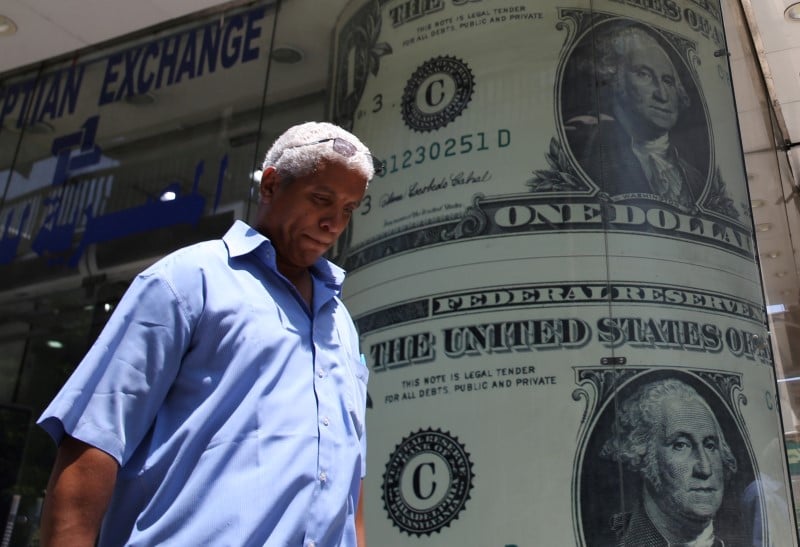

07-08-2024
The U.S. dollar edged higher Wednesday, while the Japanese yen slumped after the Bank of Japan attempted to calm troubled waters by signaling no more rate hikes while markets remain volatile.
At 04:25 ET (09:25 GMT), the Dollar Index, which tracks the greenback against a basket of six other currencies, traded 0.3% higher to 103.037, inching further away from Monday’s seven-month low.
The dollar gained a little Wednesday, benefiting in part from weakness in the yen and amid some bets that U.S. economic growth will not deteriorate as drastically as markets have been fearing.
The greenback was hit hard by fears of a U.S. recession after a batch of weak readings on the labor market, which ramped up bets that the Federal Reserve will have to cut rates more than initially expected.
However, traders have adjusted their expectations of Fed cuts as this week has progressed, with markets now pricing in a 70% chance of the Fed cutting rates by 50 bps in September, the CME FedWatch tool showed, compared with an 85% chance a day earlier.
“Market stress is noticeably higher than a week ago,” said analysts at Goldman Sachs, in a note, but “our FSI [Financial Stress Index] suggests that there have been no serious market disruptions to date that would force policymakers to intervene."
In Europe, EUR/USD fell 0.1% to 1.0918, retreating further from Monday’s seven-month high of 1.1009 as the dollar rose.
GBP/USD rose 0.2% to 1.2708, still not far from the five-week low it hit in the previous session.
Data released earlier Wednesday showed that Britain's economy grew more strongly than previously thought in 2022.
The Office for National Statistics said on Wednesday it now believed that Britain's economy grew by 4.8% in 2022, up from a previous estimate of 4.3%.
In Asia, USD/JPY rose 2.2% to 147.47, with the yen falling sharply after Bank of Japan officials downplayed expectations of interest rate hikes.
BOJ Deputy Governor Shinichi Uchida said the bank will not hike interest rates when markets were unstable - comments that come after volatile moves in the Japanese currency.
Still, the yen remained well above 38-year lows hit this year, and is expected to see more support as the Japanese economy improves on higher wage growth.
USD/CNY rose 0.4% to 7.1862, with the yuan slightly extended losses after mixed trade data.
China’s trade balance shrank much more than expected in July, undercut by disappointing exports after the European Union imposed steep import tariffs on Chinese electric vehicles earlier in July.
But Chinese imports blew past expectations, fueling some bets on a recovery in local demand.
The focus is now on Chinese inflation data due later this week.
With valuations skyrocketing in 2024, many investors are uneasy putting more money into stocks. Unsure where to invest next? Get access to our proven portfolios and discover high-potential opportunities.
In 2024 alone, ProPicks' AI identified 2 stocks that surged over 150%, 4 additional stocks that leaped over 30%, and 3 more that climbed over 25%. That's an impressive track record.
With portfolios tailored for Dow stocks, S&P stocks, Tech stocks, and Mid Cap stocks, you can explore various wealth-building strategies.
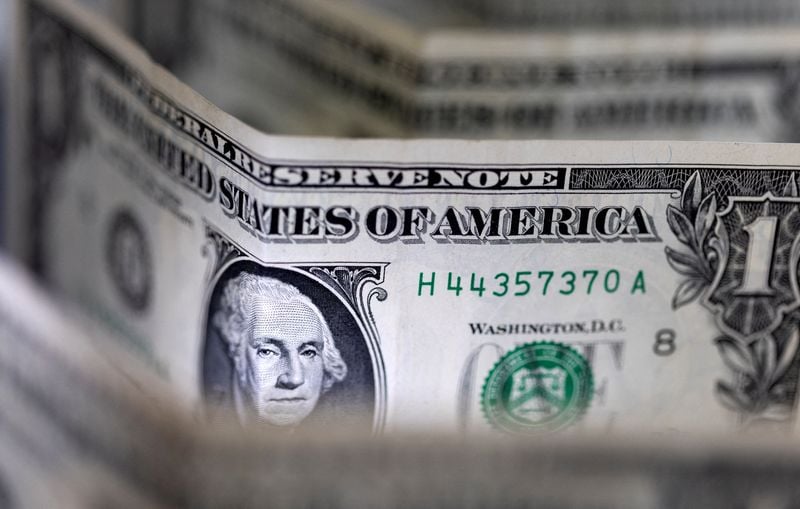

07-08-2024
Bitcoin price rose on Wednesday, extending a rebound from over five-month lows as bargain buyers stepped in and as sentiment improved slightly.
This trend was also reflected in broader crypto prices, continuing its gains from the prior session as the factors behind Monday’s rout- concerns over a U.S. recession, Japanese interest rate hikes and tensions in the Middle East- continued to weigh on sentiment.
Bitcoin rose 4.3% to $57,190.9 by 09:13 ET (13:13 GMT). The token had slumped as low as $49,000 on Monday before rebounding from those levels.
Gains in the world’s biggest cryptocurrency continued after it rebounded nearly 4% on Tuesday.
The token still traded below levels seen before Monday’s rout, as crypto markets also struggled with the prospect of a mass sale by the U.S. government, as well as waning interest in the crypto derivatives market.
Risk-off sentiment saw crypto derivatives, mainly exchange-traded funds- log steep outflows in the past week.
Optimism over an improved regulatory environment in the U.S. also waned as the 2024 presidential race heated up. Democratic nominee Kamala Harris was seen catching up with Republican nominee and pro-crypto candidate Donald Trump, a Bloomberg poll showed last week.
The International Monetary Fund said on Tuesday that it had made progress in talks with El Salvador over a funding program for the Central American country, but its adoption of Bitcoin still remained a point of contention, a Reuters report showed.
The IMF and El Salvador appeared to have reach “preliminary understandings” on improving the country’s economy, and had discussed policies that could be supported by the IMF.
But the fund noted that while several risks projected from the country’s adoption of Bitcoin had not yet materialized, negotiations with El Salvador will be aimed at mitigating said risks.
El Salvador adopted Bitcoin as legal tender in 2021, and had outlined sweeping plans to build infrastructure themed around the cryptocurrency. But these plans did not come to pass, as the country saw little improvement in its fiscal woes, and also found few takers for its planned "Bitcoin bonds" to fund the projects.
Broader crypto prices were a mixed bag on Wednesday, as a broader recovery in the sector lost momentum.
World no.2 token Ether climbed 0.5% to $2,457.49, while XRP added 2.9%.
ADA and SOL rose 3.8% and 10.5%, respectively.
Among meme tokens, DOGE added 5.4%, while SHIB rose 3.4%.
Ark Invest bought an additional 19,892 shares of Coinbase, valued at $3.9 million, across three of its ETFs on Tuesday. This move comes as the firm, led by Cathie Wood, rebalances its portfolios following Monday’s market downturn.
Specifically, Ark Invest purchased 13,833 shares ($2.7 million) for its Innovation ETF (ARKK), 2,743 shares ($533,000) for its Next Generation Internet ETF (ARKW), and 3,316 shares ($644,000) for its Fintech Innovation ETF (ARKF), based on the latest trade filings.
These purchases follow a significant buy of $17.8 million in Coinbase stock on Monday, marking the first purchase since June 2023 when Ark bought $21 million worth of COIN. According to Ark’s disclosures, COIN now constitutes the third-largest holding in its ARKK ETF, with an 8.7% weighting valued at $445.3 million as of August 6. In the ARKW fund, COIN is the fourth-largest holding at 6.8%, worth $84.4 million, and it is the largest holding in the ARKF fund at 9.8%, valued at $75.1 million.
On Tuesday, Coinbase shares rose 2.48% to close at $194.17. The gain is part of a recovery from a 15% drop on Monday morning, fueled by market volatility linked to U.S. recession fears and increased geopolitical tensions.
Coinbase shares rose an additional 1.3% in Wednesday's premarket.
With valuations skyrocketing in 2024, many investors are uneasy putting more money into stocks. Unsure where to invest next? Get access to our proven portfolios and discover high-potential opportunities.
In 2024 alone, ProPicks' AI identified 2 stocks that surged over 150%, 4 additional stocks that leaped over 30%, and 3 more that climbed over 25%. That's an impressive track record.
With portfolios tailored for Dow stocks, S&P stocks, Tech stocks, and Mid Cap stocks, you can explore various wealth-building strategies.
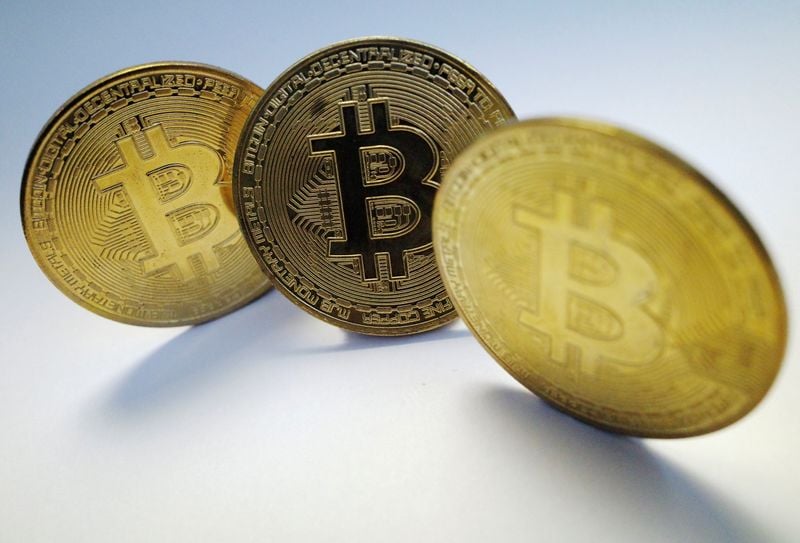
XPO will be based on extensive market research of Cryptocurrencies, its compatibility with third-party services wallets, exchanges etc, and performance over the years.

This blog post will discuss the upcoming Ethereum 2.0 upgrade, which is set to take place in 2021. We will cover all of the critical aspects of the upgrade, including what it is, why it's happening, and what benefits . . .
Read More
You are saving money by investing sounds like a simple concept. But it would help if you were careful how you apply it. Investing in a mutual fund differs . . .
Read More
he Blockchain Economy Istanbul Summit is an annual event that focuses on blockchain technology and its applications. The summit is attended . . .
Read MoreThe XPO Team combines a passion for esports, industry experise & proven record in finance, development, marketing & licensing.
Any question? Reach out to us and we’ll get back to you shortly.